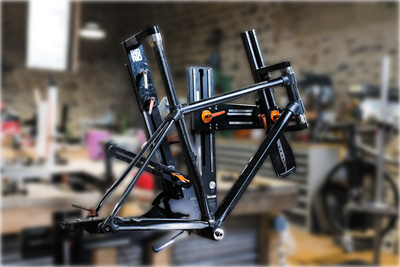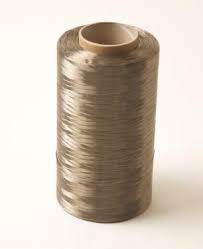Commingled yarn solutions provide flexible thermoplastic prepregs
CAMX 2024: Concordia Engineered Fibers presents customizable commingled yarn solutions, including environmentally friendly options.
Share
12K carbon fiber/PEEK/Monel commingled yarns (left) and basalt/PA11 fibers (right). Source | Concordia Engineered Fibers
Concordia Engineered Fibers (Coventry, R.I., U.S.) specializes in advanced twisting, precision winding and yarn conversion for composite applications, focusing on continual improvement and product development. Concordia continues to concentrate on twisting and plying carbon fiber for 3D woven preforms, carbon/carbon applications and carbon sewing thread, efforts which contribute to continuous filament processing capabilities.
Concordia’s continuous tow, containing customized ratios of reinforcement fibers with thermoplastic fibers, produces flexible thermoplastic prepregs. This blending of dissimilar fibers in a continuous filament format lends itself to a wide range of composite applications, though it is especially designed for thermoplastic composites. Concordia notes that this commingling aspect is not limited to two input materials — the company’s 12K carbon fiber/PEEK/Monel commingled yarns, as shown above, is one example of how these filaments can be customized for specific end uses. Adding metallic inputs and inlaying specific properties within thermoplastic forms can add design characteristics and provide strengthening or conductive properties as needed. Fibers such as Innegra can also be incorporated.
As sustainability has emerged as a pressing concern, Concordia says it strives to integrate more sustainable fiber inputs. Combinations like basalt/PA11 (shown above) are bio-based and environmentally friendly options for next- generation composites. Flax reinforcements commingled as a processable and highly drapeable tow is another option provided by Concordia. Whether woven, braided, pultruded, embroidered via tailored fiber placement, 3D printed or filament wound, Concordia’s commingled yarn provide customized solutions.
Concordia Engineered Fibers, an ISO 9001-certified company, offers an international footprint for yarn conversion, with manufacturing facilities in France, Mexico and its headquarters in Rhode Island in the U.S.
Related Content
-
PEEK vs. PEKK vs. PAEK and continuous compression molding
Suppliers of thermoplastics and carbon fiber chime in regarding PEEK vs. PEKK, and now PAEK, as well as in-situ consolidation — the supply chain for thermoplastic tape composites continues to evolve.
-
Plant tour: Albany Engineered Composites, Rochester, N.H., U.S.
Efficient, high-quality, well-controlled composites manufacturing at volume is the mantra for this 3D weaving specialist.
-
Plant tour: Teijin Carbon America Inc., Greenwood, S.C., U.S.
In 2018, Teijin broke ground on a facility that is reportedly the largest capacity carbon fiber line currently in existence. The line has been fully functional for nearly two years and has plenty of room for expansion.
Related Content
PEEK vs. PEKK vs. PAEK and continuous compression molding
Suppliers of thermoplastics and carbon fiber chime in regarding PEEK vs. PEKK, and now PAEK, as well as in-situ consolidation — the supply chain for thermoplastic tape composites continues to evolve.
Read MorePlant tour: Albany Engineered Composites, Rochester, N.H., U.S.
Efficient, high-quality, well-controlled composites manufacturing at volume is the mantra for this 3D weaving specialist.
Read MorePlant tour: Teijin Carbon America Inc., Greenwood, S.C., U.S.
In 2018, Teijin broke ground on a facility that is reportedly the largest capacity carbon fiber line currently in existence. The line has been fully functional for nearly two years and has plenty of room for expansion.
Read MoreThe lessons behind OceanGate
Carbon fiber composites faced much criticism in the wake of the OceanGate submersible accident. CW’s publisher Jeff Sloan explains that it’s not that simple.
Read MoreRead Next
Thermoplastic composite, tube-shaped preforms for large-volume manufacturing
Starting with the sporting goods and bicycle market, French startup 3DiTex targets its continuous preforming system for thermoformable, thermoplastic composite tubes in complex geometries.
Read MoreCan basalt fiber bridge the gap between glass and carbon?
When I started writing about composites in the way, way back, industry innovator Brandt Goldsworthy was still alive. His article on basalt fiber was one of the most-read columns in the old Composites Technology book, and there seems to be a lot of interest in this alternative performance fiber. Mafic SA is a new player in the basalt fiber market.
Read MoreAll-recycled, needle-punched nonwoven CFRP slashes carbon footprint of Formula 2 seat
Dallara and Tenowo collaborate to produce a race-ready Formula 2 seat using recycled carbon fiber, reducing CO2 emissions by 97.5% compared to virgin materials.
Read More









